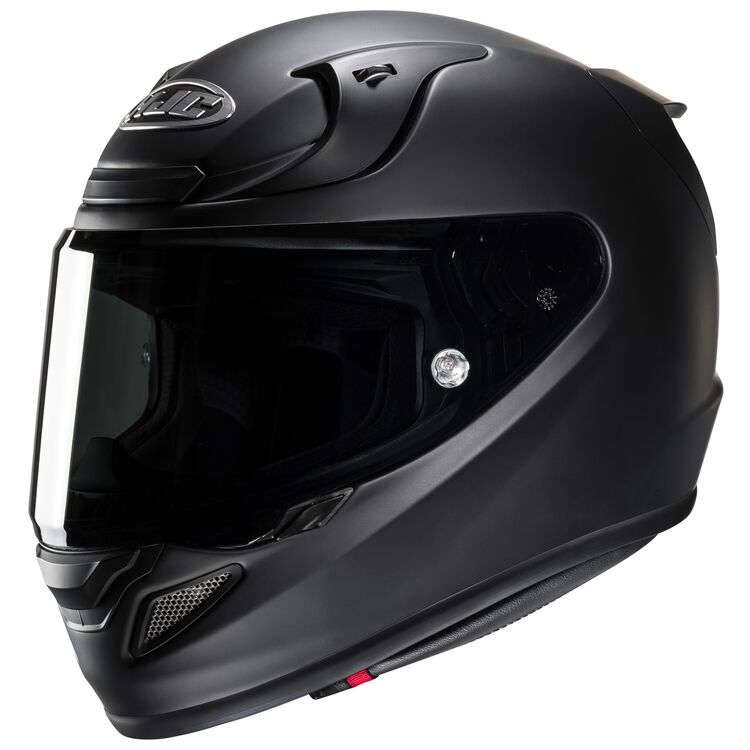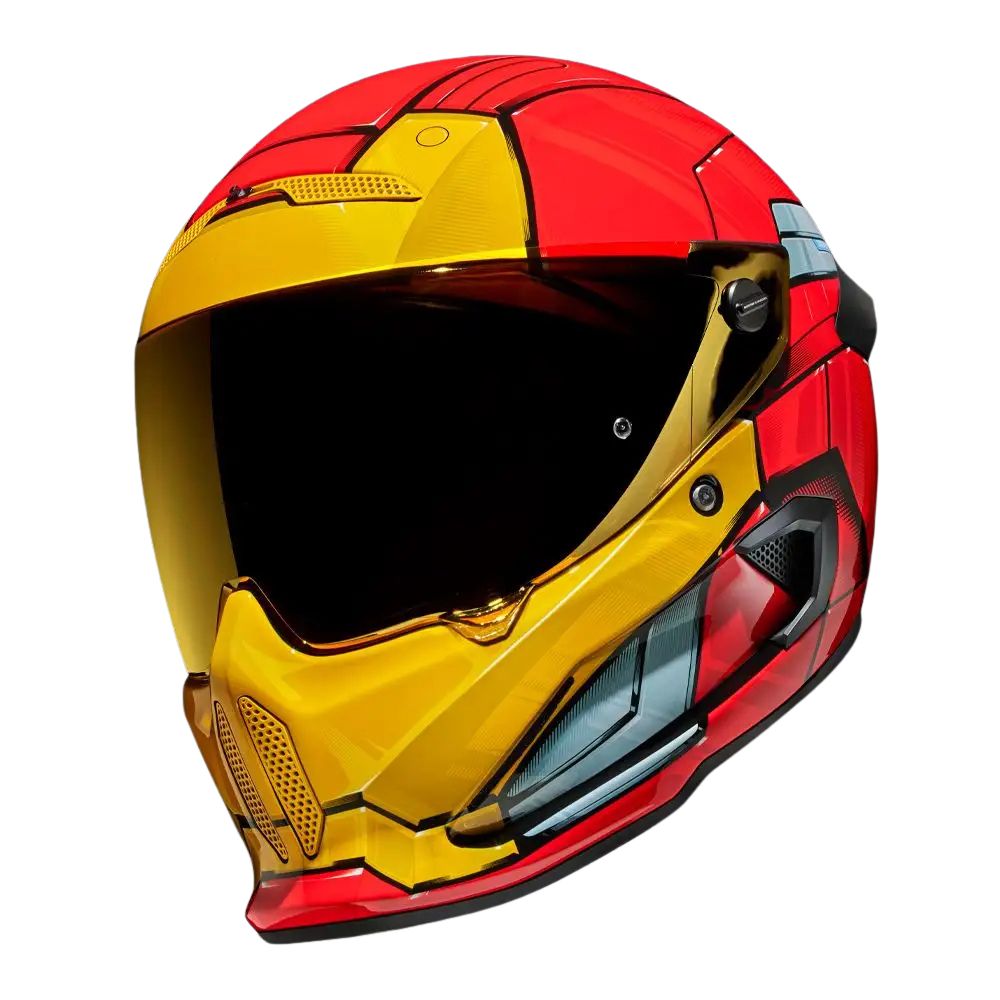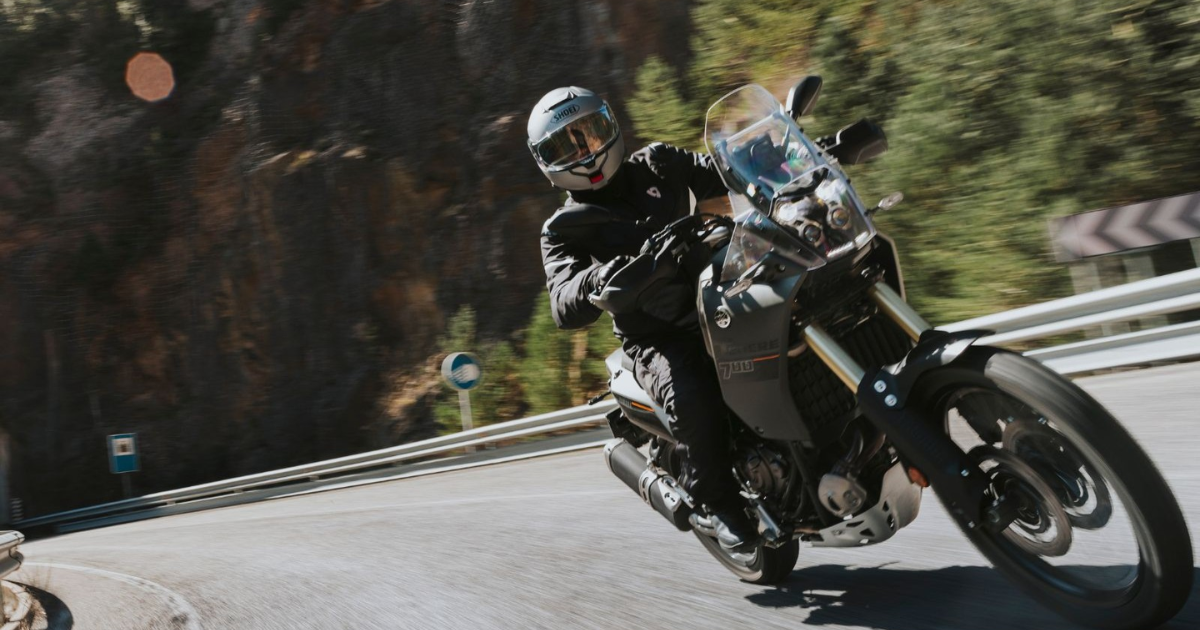
Best Iron Man Motorcycle Helmets (That Aren’t Just Props)
left for contents
A few years ago, I saw a guy roll into a meet wearing what looked like an Iron Man helmet. Heads turned. People snapped pics. It looked amazing… until he took it off and set it down. That thing was a cheap cosplay shell. No liner. No chin strap. Not even a DOT sticker. Just hollow plastic and a cool paint job.
That’s the problem. Most Iron Man–style motorcycle helmets out there are made to look cool, not keep you alive. They’re built for comic cons, not highways. And if you’re reading this, I’m guessing you care about both, the look and the ride.
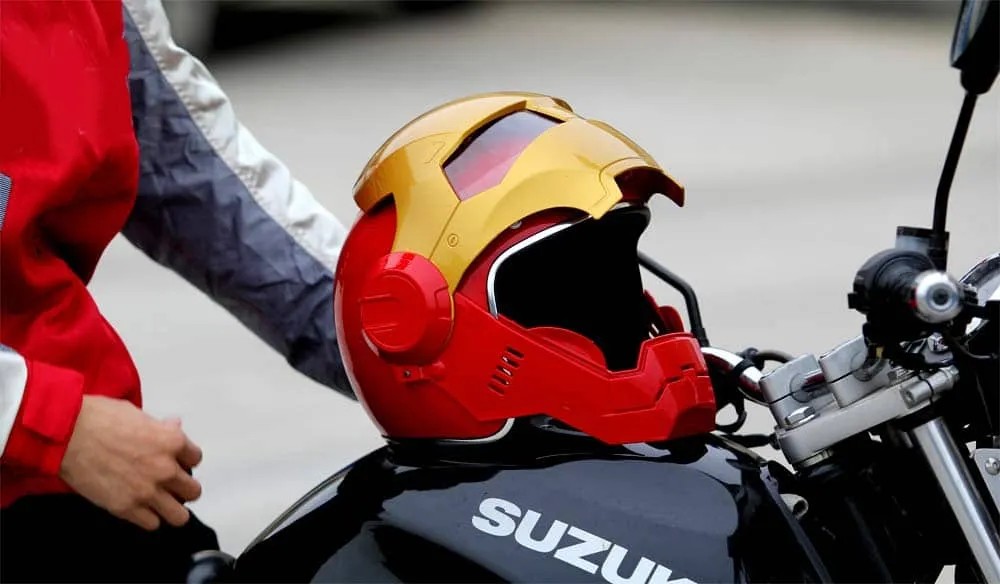
Because let’s face it. You don’t just want to look like Tony Stark. You want to ride like him too. Fast. Sharp. Confident. With gear that actually performs when things get dicey.
This guide is for riders who want to turn that glossy, cinematic fantasy into something real. We’ll walk through the helmets that have the right shape, the right safety certifications, and the right structure to become your personal Mark 50. No junk. No knockoffs. Just legit bases you can mod, paint, or armor up without compromising your neck in the process.
Start with the right shell, and the rest of the suit builds itself.
One of the top motorcycle helmets for street riding due to its incredible safety ratings, solid build construction, versatile shell for street and track riding, and reasonable price. Long term review here. | A lightweight, aerodynamic full-face helmet with premium P.I.M. EVO shell construction, superb airflow via 4 front intakes and 3 exhausts, and customizable comfort for long rides. | A lightweight, high-performance full-face helmet designed for superior comfort, safety, and visibility. |
|
|
|
|
|
|
One of the top motorcycle helmets for street riding due to its incredible safety ratings, solid build construction, versatile shell for street and track riding, and reasonable price. Long term review here.
- Ultra-quiet, aerodynamic shell
- Premium comfort and ventilation
- DOT + Snell certified
- Ideal for long rides
- Pricey
- Slightly heavier than carbon options
A lightweight, aerodynamic full-face helmet with premium P.I.M. EVO shell construction, superb airflow via 4 front intakes and 3 exhausts, and customizable comfort for long rides.
- Lightweight PIM EVO shell
- ECE 22.06 + DOT certified
- Track-focused ventilation
- Smooth, seamless shell—ideal for custom mods
- Fit may run snug
- Fewer shell sizes than Shoei
A lightweight, high-performance full-face helmet designed for superior comfort, safety, and visibility.
- Ultra-lightweight carbon fiber shell for enhanced aerodynamics
- Pinlock Max Vision visor for fog-free clarity in any condition
- Built-in sun shield for quick adaptability to changing light
- Long oval shape may not suit all riders
Want an Iron Man Helmet That’s Ride-Ready? Start Here.
Most Iron Man motorcycle helmets look epic, but fall apart on the road, both literally and legally. Whether you’re chasing a sleek red and gold replica or just want to turn heads with a custom Marvel lid, your foundation matters. In this guide, we break down the safest, best-looking, and most mod-friendly full-face helmets that can serve as your real-world Iron Man base. No knockoffs, no compromises.
Shoei RF-1400: If Stark Rode, He’d Start Here
Let’s be clear. If you’re building an Iron Man helmet that’s actually rideable, the Shoei RF-1400 should be on your short list. I’m not saying it looks like Iron Man out of the box, because it doesn’t. But the shape, the structure, the way it moves through air like it was designed in a wind tunnel—that’s very Tony Stark.
What makes this lid work for a build like this is how clean it is. No weird edges. No oversized vents or forced “aggression.” Just smooth, aerodynamic curves that don’t fight you when you start laying down tape or planning your paint zones. From a customization standpoint, it’s one of the most cooperative helmets you can work with.
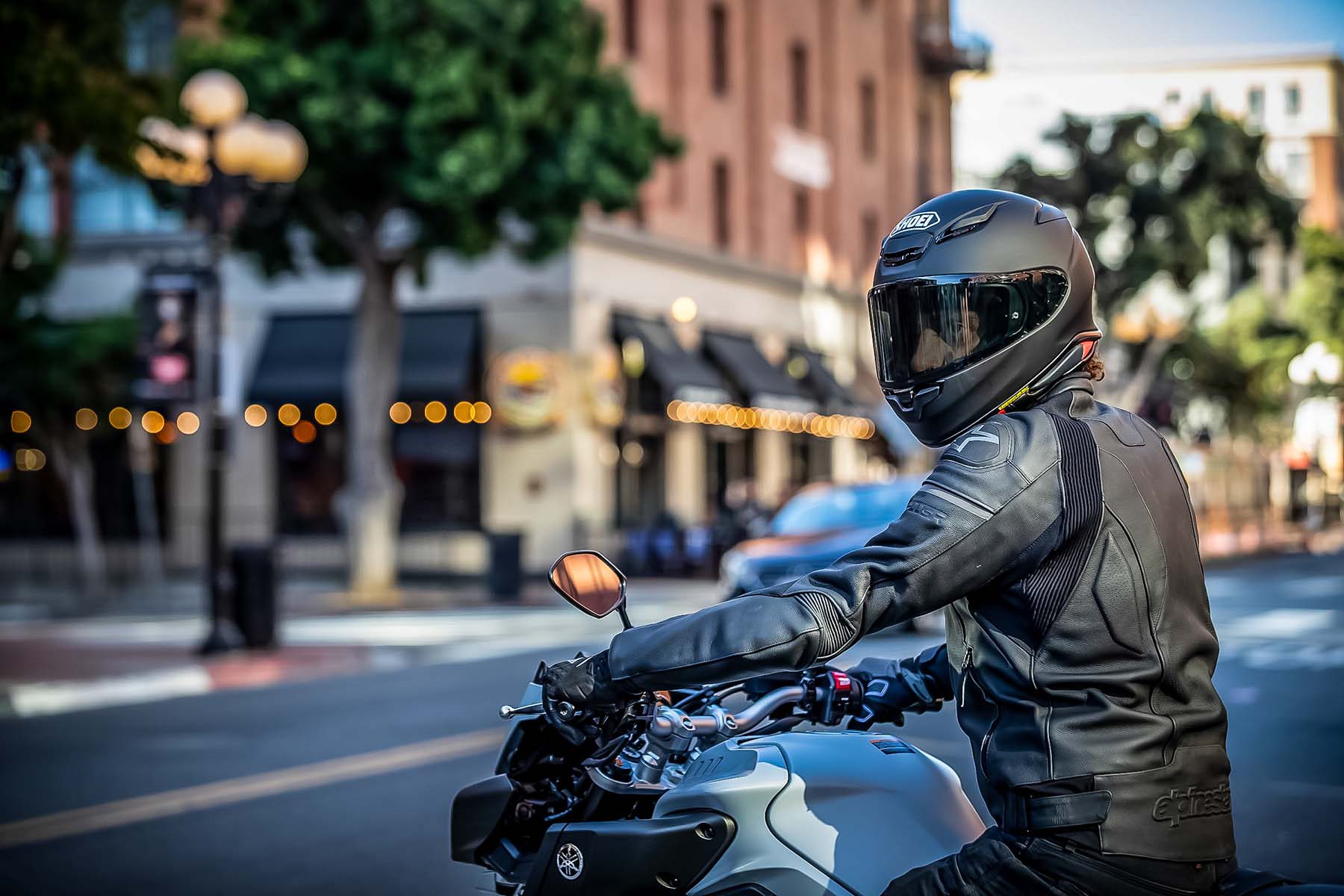
The jawline hits just right. Angled enough to look fast and sharp, but not so wild it throws off the faceplate vibe. And the visor cut gives off just the right kind of Iron Man energy when you black it out or swap for a mirrored shield. It’s subtle, but it matters when you’re trying to nail that look without turning it into a costume.
Now the ride? It’s Shoei. You feel it as soon as you click it on. Quiet, balanced, barely any buffeting even at speed. You could daily this thing for 500 miles and still feel dialed in. Ventilation is strong, and the seal around the shield keeps wind out better than most. If you’re the kind of rider who doesn’t want to choose between comfort and looking cool, this is your answer.
It’s not the cheapest helmet out there. But it’s not supposed to be. You’re paying for a shell that actually protects your head and still gives you room to get creative. You can lay down candy red and gold without fighting weird shapes or logos. You can add panel lines or faux vents without cutting into structural weak points.
Want a deeper look at why this lid is one of the most trusted full-face helmets out there? Check out the full RF-1400 breakdown here.
One of the top motorcycle helmets for street riding due to its incredible safety ratings, solid build construction, versatile shell for street and track riding, and reasonable price. Long term review here.
- Staff pick at Revzilla
- Quietest helmet on the market
- Excellent build quality
- Thick noise-sealing cheekpads
- Visor seal built like Fort Knox
- Snell certified for track use
- Lacking touring comfort features like drop down sun shield
HJC RPHA 12N: The Performance Shell That Can Become Tony Stark Ready
The RPHA 12N doesn’t need to scream Marvel to be the right base for an Iron Man helmet. What it gives you is clean lines, a race-bred shell, and zero visual nonsense. That’s exactly what you want when you’re planning a custom job that needs to look sharp and ride even sharper.
The shell is light but solid. It’s made from a composite blend that includes carbon and fiberglass, and it’s certified for both DOT and ECE 22.06. That’s not marketing fluff. That’s protection you can count on if something goes sideways. And at around 3.3 pounds, it doesn’t feel like a brick on your neck.
Vents are smart, not overdone. Airflow moves well even in full tuck, and the controls don’t fight you with gloves on. Inside, it’s snug, breathable, and breaks in without pressure points. Noise is better than average. Not silent, but totally manageable for long rides.
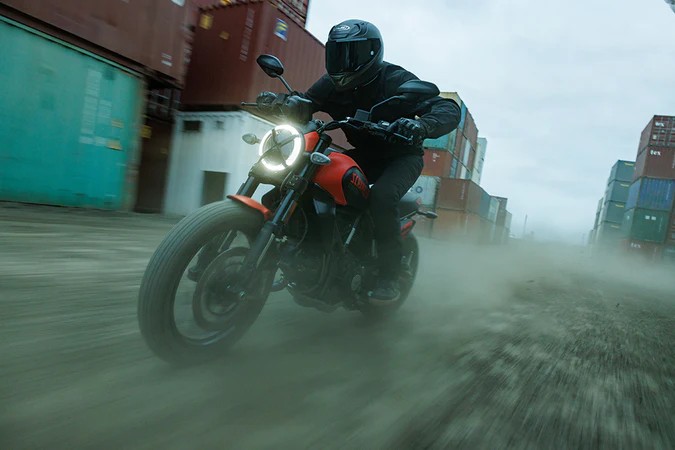
There are a couple quirks. The visor mechanism can be sticky, and the front vent slider needs regular cleaning to stay smooth. But nothing here is a dealbreaker.
This helmet gives you a neutral, smooth shell with a strong, certified build and rider-compatible features. That means fewer problems when you’re painting, taping, or planning accent lines. It’s aerodynamic enough that you don’t lose rideability after customization. It still behaves like a real sport lid.
If you’re after a base that’s functional, safe, and easy to turn into something Stark-worthy, the RPHA 12N is a legit option. You’re not just painting a prop. You’re crafting a helmet that looks fast, feels right, and actually protects your head. Just like it should.
Want to see how the RPHA 12N stacks up against other top-tier lids? We reviewed it in our roundup of the coolest helmets on the road.
A lightweight, aerodynamic full-face helmet with premium P.I.M. EVO shell construction, superb airflow via 4 front intakes and 3 exhausts, and customizable comfort for long rides.
- Track-grade ventilation keeps you cool even at high speeds
- Aerodynamic shell and spoiler lower lift and boost stability
- Customizable fit with interchangeable cheek pads and removable liner
- Emergency pull-tab allows safe, quick helmet removal
- Initial fit may run tight—takes time to break in
- Noise control is good, but not as muted as ultra-premium lids
LS2 Citation II Carbon: Lightweight and Legit
If you’re building an Iron Man helmet that actually rides as good as it looks, the LS2 Citation II Carbon is worth a hard look.
The shell is real 6K carbon fiber, and it weighs in around 1.3 kg. For the price, that’s impressive, and it meets both DOT and ECE 22.06 standards, so you’re not compromising safety to keep the look clean.
Fit is long oval, and LS2 offers multiple shell sizes, so if your head shape matches, you’ll get a solid, dialed-in feel. Ventilation is solid, with intake ports on the chin and forehead and exhaust vents that do the job even in warmer conditions.
What makes it stand out for customization is how smooth the shell is. No odd contours or deep vents to work around. Just clean lines that are easy to tape and paint. The chin bar shape works great if you’re adding panel detailing or a gold jaw section, and the sides are flat enough to lay down clean graphics.
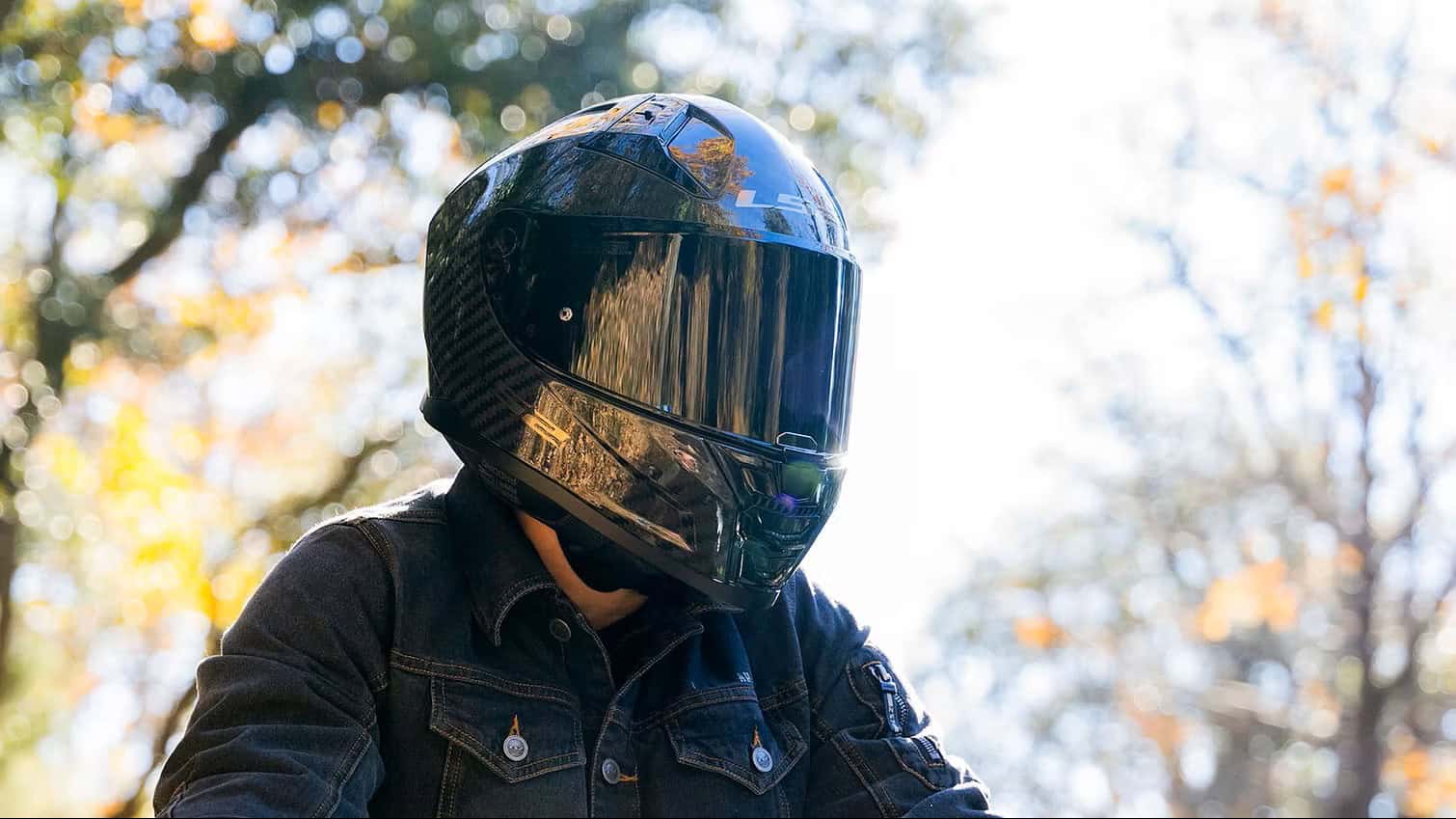
Visibility is solid. The shield is optically correct, scratch-resistant, and UV protected. It comes with a Pinlock Max insert in the box, and there’s a built-in sun visor if you ride in bright conditions. All this makes the helmet more functional without cluttering the design.
Inside, the comfort liner is soft, moisture-wicking, and doesn’t trap heat like cheaper pads. The cheek pads are laser-cut and removable, and there’s an emergency pull-tab system built in. Comfort holds up well on long rides with minimal pressure points.
Noise levels are manageable. Not whisper quiet, but well below average for a carbon helmet in this weight class. With earplugs or a comm system, it’s a non-issue.
If there’s a downside, it’s mostly about fit. It won’t be ideal for rounder heads, and some riders report the vent sliders getting sticky with grime over time. Also, while safety performance is strong, it doesn’t reach Snell or SHARP five-star levels. But for the weight, price, and features, it still punches above its class.
The LS2 Citation II Carbon gives you a featherweight, road-legal shell that’s ready for paint. It protects well, looks clean, and won’t fight you when it’s time to mod. If you’re going for Iron Man on a budget but still want to ride with confidence, this lid delivers. See how the Citation stacks up in our lightweight helmet guide.
A lightweight, high-performance full-face helmet designed for superior comfort, safety, and visibility.
- Super lightweight carbon shell
- Wide visor, great visibility
- DOT + ECE certified
- Budget-friendly for carbon
- Less padding comfort than premium brands
- Slightly louder at highway speeds
Ruroc ATLAS 4.0 Marvel’s Iron Man: Stylin’, Certified, but a Few Tradeoffs
If you want a helmet that already looks like Iron Man and isn’t just cosplay, this is one of the few options built for real riding.
The carbon fiber shell is fully certified with ECE 22.06 and DOT approval, and it includes RHEON impact material inside to manage both linear and rotational forces. It exceeds safety benchmarks by a good margin, putting it up there with some of the most protective helmets on the market.
Field of view is excellent. You get about 215 degrees of horizontal vision and 100 vertical, which makes a real difference in city traffic or lane checks.
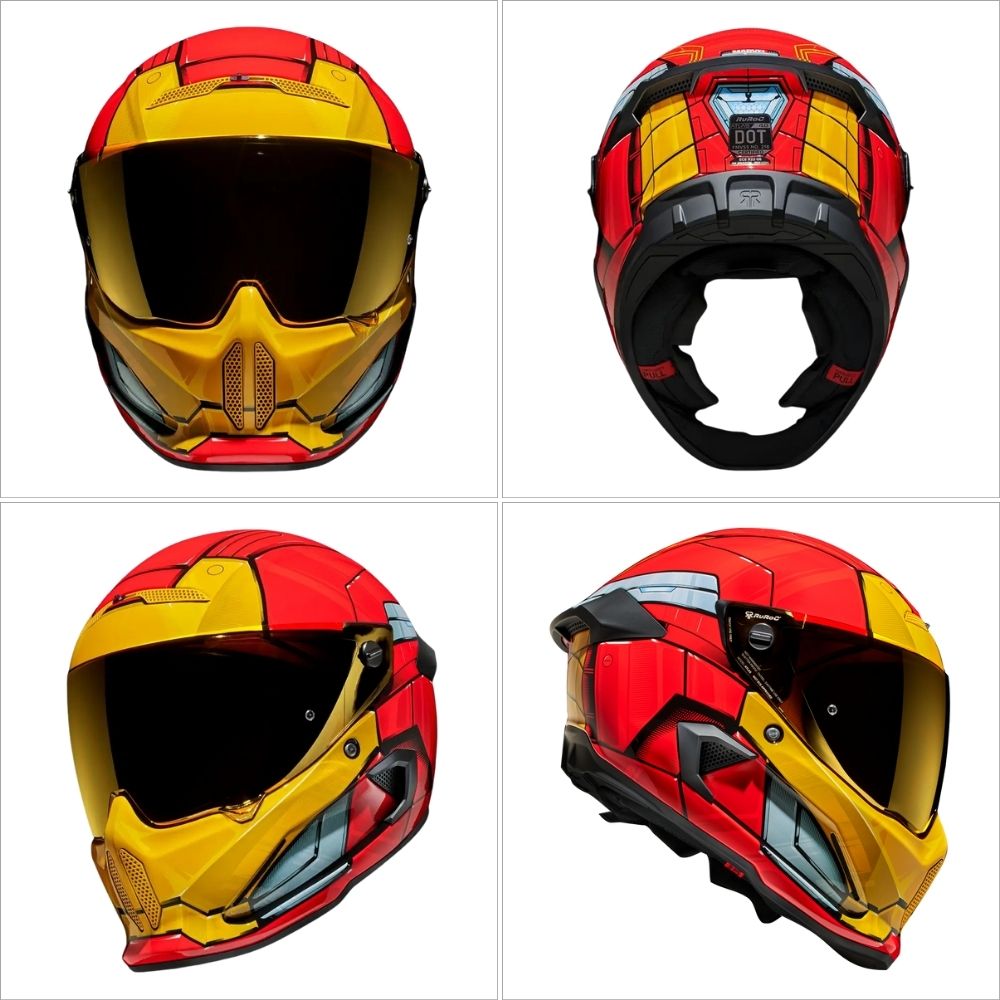
Ventilation is decent but not perfect. The helmet has chin and top vents along with rear exhausts, but some of the side scoops are just for show. The chin vent switch is placed inside the chin bar, which makes it a pain to adjust on the fly. Cooling is okay, but airflow control could be better designed.
Noise levels have improved compared to earlier versions. Ruroc claims a big drop, and while it’s still not whisper quiet, it’s now manageable for longer rides. That said, the side vents can get loud in crosswinds.
Comfort is solid once the liner breaks in. Padding is layered and supportive, though some riders mention a bit of pressure at the base of the neck on extended rides. The fit is snug but stable, and the liner materials feel high quality.
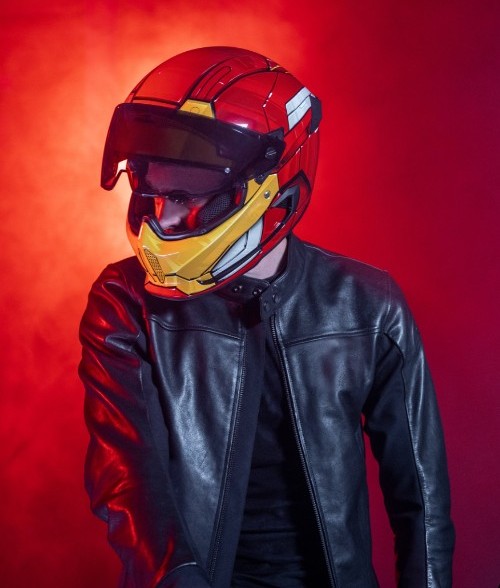
Visibility through the shield is strong, and the eyeport is wide enough for a peripheral-friendly view. Fogging can be a problem though, since Pinlock isn’t included. The visor is tool-free to remove, but the hinge takes a minute to figure out the first time.
The Fidlock magnetic chin strap closes quickly and stays locked, but adjusting it takes more time than a traditional ratchet or D-ring system.
Now the look. This thing nails the Iron Man aesthetic right out of the box. The shell shape, paint, and visors all work together to give it that armored, movie-ready presence. If you want to ride in full Tony Stark mode without touching a paintbrush, this is the one to get.
It’s not cheap, and a few details could be more refined, but if you’re after a helmet that looks like a Marvel collectible and still passes real safety tests, the ATLAS 4.0 Iron Man delivers.
Striking Iron Man–themed full-face helmet that delivers top-tier safety (exceeds ECE 22.06), dynamic impact protection with RHEON lining, and superior climate control and acoustic performance.
- Next-level safety with ECE 22.06 and RHEON impact technology
- Sound-dampening lining cuts noise by around 57%
- Vent system tightly manages heat via adjustable front and top vents
- Stunning carbon design and fully integrated Bluetooth-ready system
- Aggressive side intake vents may still allow noticeable wind noise
- Complex visor swaps require care—small screws can be fiddly
Scorpion EXO Covert FX: Full-Face Edge, Raw Canvas
If you’re going for an Iron Man helmet build that blends edgy styling with real-road legality, the Covert FX hits a sweet spot. Unlike the earlier Covert X, this is a full-face helmet by design with a solid, fixed chin bar.
The build is light at around 1.35 kg or 3 pounds in a medium, and made from Scorpion’s TCT-Ultra composite, which layers fiberglass, aramid, and poly-resin for strength and weight savings. It’s certified for both DOT and ECE 22.06, so it meets real-world safety standards.
One of the best things here is the massive eyeport. Visibility is wide and immersive, which is perfect if you’re planning to add aerodynamic paint or creative detailing. Ventilation comes from top vents and an internal dual-position mouth vent. The chin curtain helps cut wind noise better than you’d expect from a helmet in this weight class.
Inside, the KwikWick III liner does a great job pulling moisture away. The cheek padding is soft and supports glasses comfortably. You also get speaker pockets and tool-free shield changes, so it’s easy to add comms or swap out parts when needed. LS2 includes different liner and cheek pad sizes to help dial in the fit.
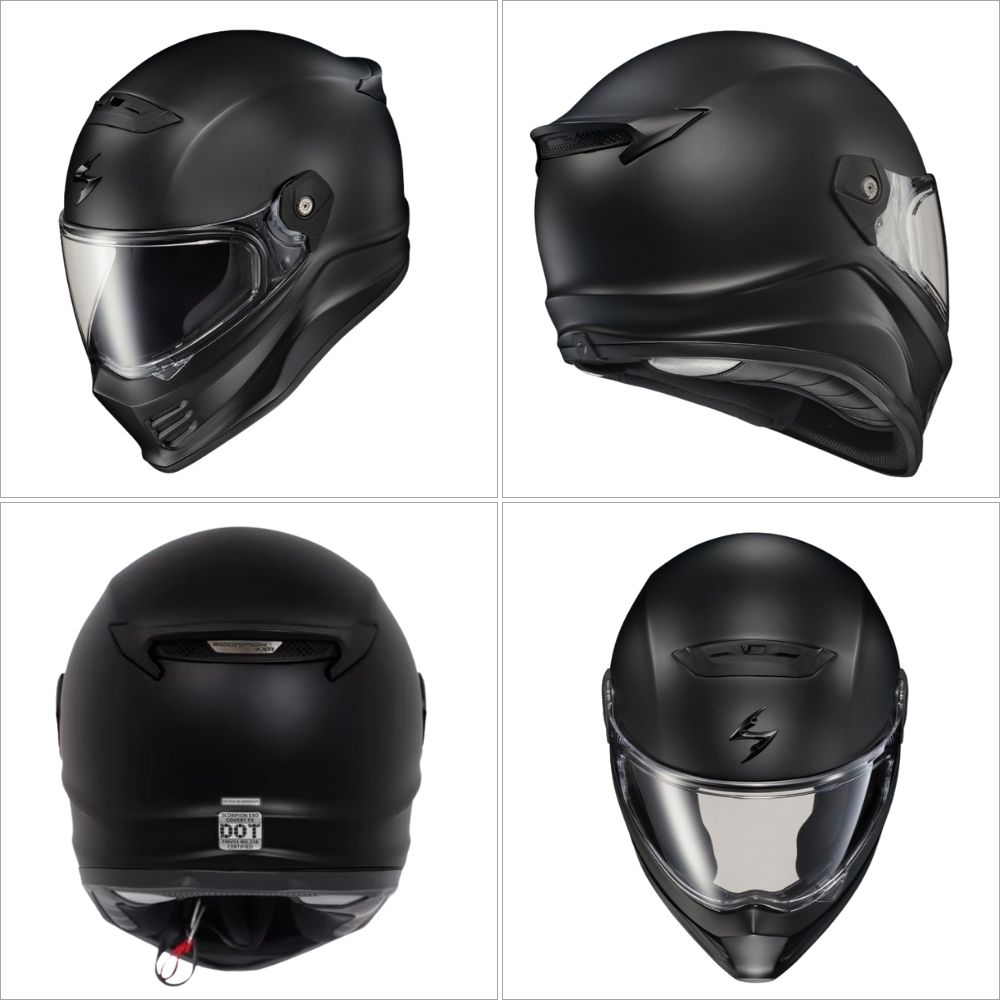
Noise levels are decent for a lightweight composite shell. It’s not whisper quiet, but quieter than a lot of similarly aggressive lids. The vent sliders sit flush, which keeps the outside clean, though they can get sticky over time if dust builds up.
The Covert FX really shines in terms of mod potential. The geometry is clean and aggressive with no weird vent bulges or overdone contours. That tough, grille-style front and angular jawline already look like something Stark would design. Paint it red and gold, and you’re 80 percent there before even adding panel lines.
Fit favors intermediate oval heads, and with only two shell sizes across seven helmet sizes, you might not get the most compact form if you wear a small. While the safety credentials are solid, it doesn’t have Snell certification if that’s something you prioritize.
The Covert FX gives you full-face protection, strong visual style, and a surface that’s easy to customize. It may not be a long-haul touring helmet, but for city riders or anyone who wants to turn heads with something that actually performs, it’s a solid foundation for an Iron Man build.
If you’re leaning toward the Covert look for your Iron Man build, check out our hands-on review of the best Harley-friendly helmets including this one.
Sleek, aggressive full‑face with wide field of view, lightweight shell, smooth aerodynamics, and full DOT/ECE 22.06 protection—ride sharp and stay safe.
- Impressive visibility with tall eyeport
- Feather‑light composite shell eases fatigue
- DOT & ECE certified for trusted protection
- KwikWick liner wicks moisture, stays comfy
- Top vent airflow is underwhelming
- Includes only two shell sizes (XS–L, XL–3XL)
How to Customize Your Helmet to Look Like Iron Man
If you want your helmet to channel Iron Man, you’ll need more than just a red paint job. The best Iron Man–style lids are a blend of bold color, clean geometry, and a few subtle design tricks that make them feel straight out of the MCU, without ruining safety or comfort in the process.
Start With the Right Base Helmet. Before anything else, pick a helmet that has the right shape and surface for customization. Look for:
- Smooth, uninterrupted shell design (like the HJC RPHA 12N or Shoei RF-1400)
- Full-face coverage for that armored Iron Man silhouette
- No wild ridges or decals that could interfere with painting or sculpting
- DOT or ECE certification, so your build is actually road-legal
Starting with a matte or gloss solid red helmet can save you hours in paint prep. If red isn’t available, a white or black shell gives you a blank canvas for layering.
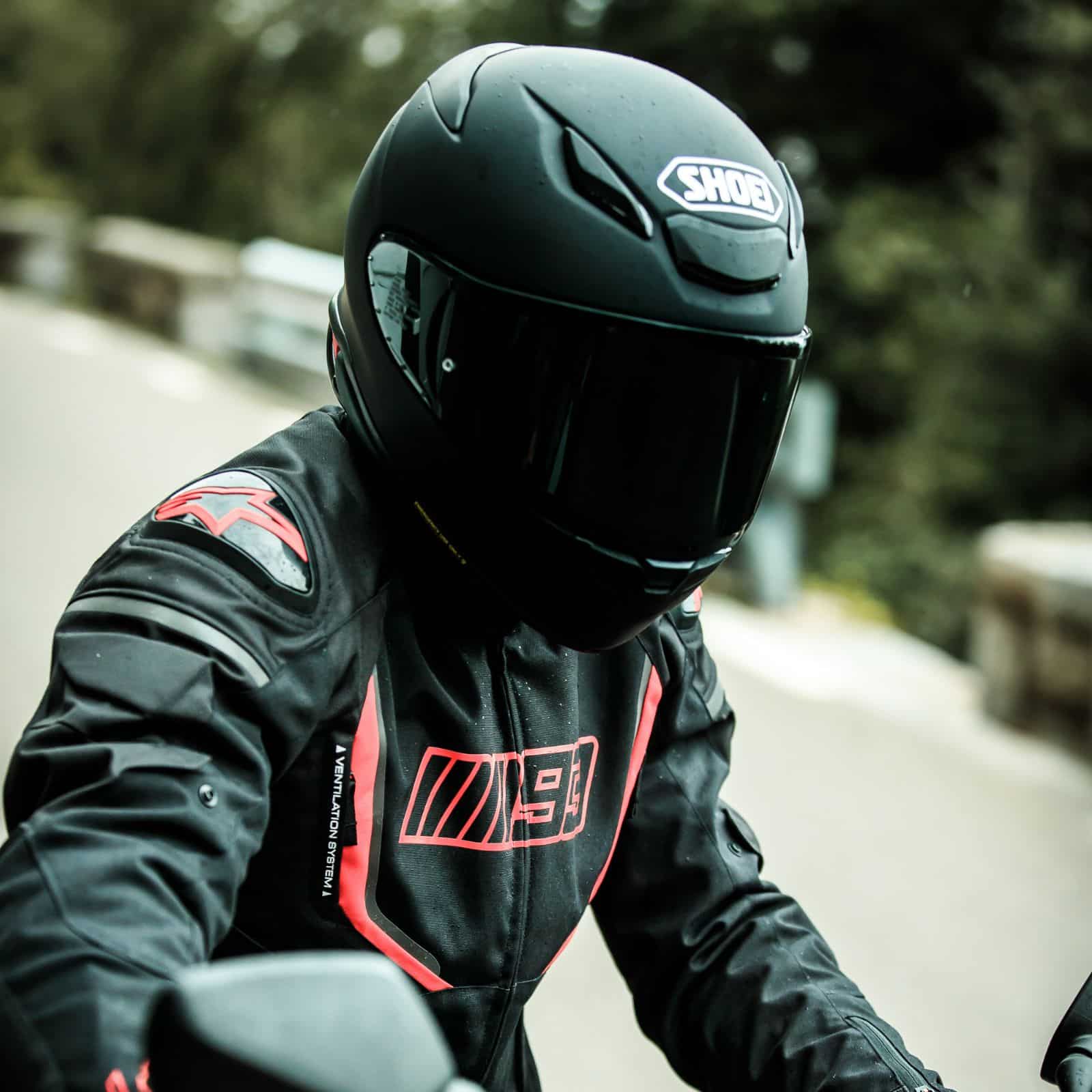
If you’re not sure what kind of paint, tape, or lighting gear to use, we’ve broken it all down in our full helmet customization guide right here.
Core Iron Man Colors to Use, You’ll want to stick to the core color scheme for that unmistakable Iron Man vibe:
- Candy Apple Red (main shell color)
- Metallic Gold or Champagne Gold (faceplate or jawline area)
- Gunmetal accents (vents, visor trim, rear lines)
Add Design Features That Sell the Look. Once your paint is locked in, it’s the small touches that bring it home:
- Black-out the visor (or use a mirrored gold visor if legal)
- Add faux panel lines with airbrushing or thin adhesive striping
- Install white or blue LED lights behind vents to mimic the helmet’s eyes or jaw arc
- Use plasti-dip, vinyl, or molded EVA foam to add raised areas if you’re experienced with sculpting
Finish With a Clear Protective Coat. Once your paint and detailing are finished, apply a high-quality automotive clear coat to protect the work. Make sure it’s compatible with your helmet’s base material.
A clean base, bold colors, and just the right amount of armor detailing. That’s the formula. You don’t need nanotech, just a solid lid, some patience, and a steady hand.
How to Tell If an Iron Man Helmet Is Rideable or Just a Prop
Here’s the truth: not every Iron Man helmet you see online belongs on a motorcycle. Some are built purely for cosplay, made to impress in photos but completely useless the moment your tires hit pavement. If you’re shopping for one or planning to build your own, knowing the difference between a prop and a rideable lid could literally save your life.
The first thing to check is safety certification. A helmet designed for real riding should carry labels like ECE 22.05, ECE 22.06, or Snell. DOT certification is common in the U.S., but it operates on an honor system and is not enough by itself. For real protection, look for helmets that have both DOT and either ECE or Snell approval. These standards involve lab-tested impact absorption, shell integrity, and retention systems.
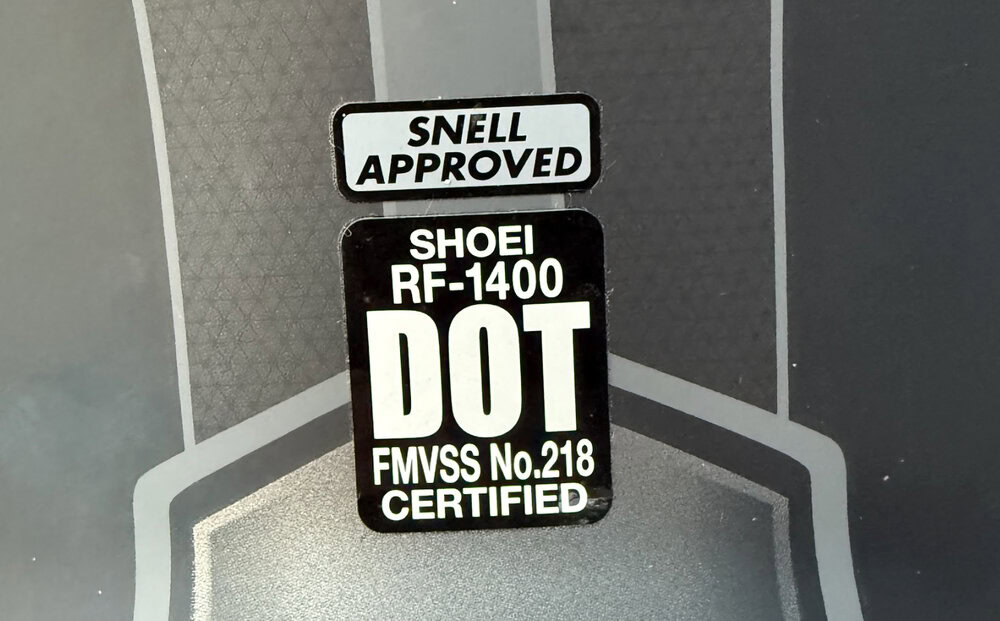
Next, consider the shell material. Prop helmets are usually made from resin, PVC, or thin plastic. These materials cannot handle crash forces. A real motorcycle helmet uses polycarbonate, fiberglass composite, or carbon fiber. Inside, there should be a multi-density EPS liner designed to absorb energy and reduce injury. If the product listing doesn’t clearly state what materials are used, that’s already a problem.
You should also look at the visor and ventilation. A legit helmet will have an optically correct face shield that resists fog and seals tightly. Most prop helmets use cheap acrylic with poor visibility, no anti-fog coating, and zero safety value. Real helmets also include functioning airflow channels and a strong, adjustable chin strap. If the vents are fake or the strap looks like a costume piece, skip it.
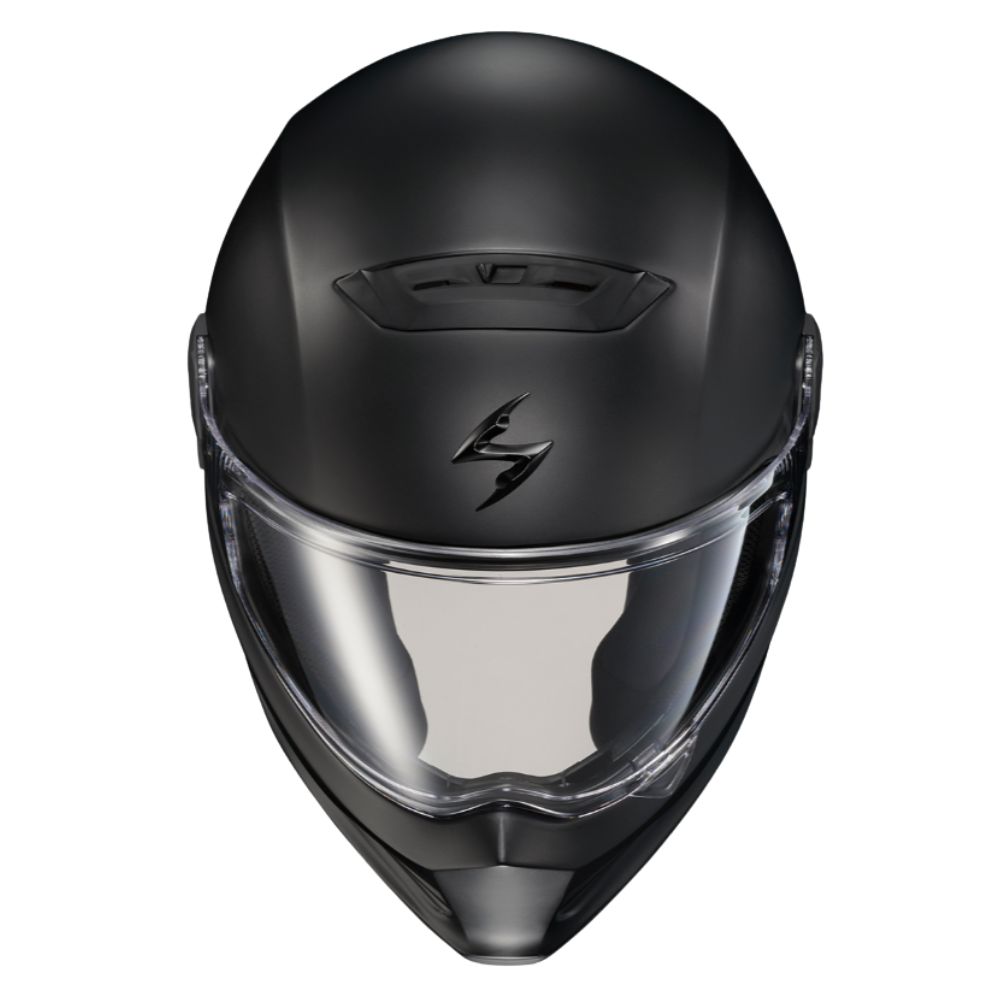
Finally, read the product description closely. If it says anything like “not for highway use,” “for costume only,” or “novelty helmet,” then it’s not meant to protect your head. Even if it looks flawless, it was never designed to survive a real impact.
A real Iron Man helmet should do more than make you look cool. It should pass the same tests as any serious motorcycle helmet. Start with a shell that’s built for real-world riding, then layer in your custom design from there. You get the look you want and the safety you need. No compromise.
Iron Man Helmet FAQ
Thinking about building or buying an Iron Man–style motorcycle helmet? You’re not alone. These are some of the most common questions riders ask about legality, safety, and how to pull off the look without compromising protection.
Are there any officially licensed Iron Man motorcycle helmets?
Yes. HJC previously released a licensed Iron Man version of the RPHA 70 ST, which was both DOT and ECE certified. It has since been discontinued but may still appear through secondhand sellers.
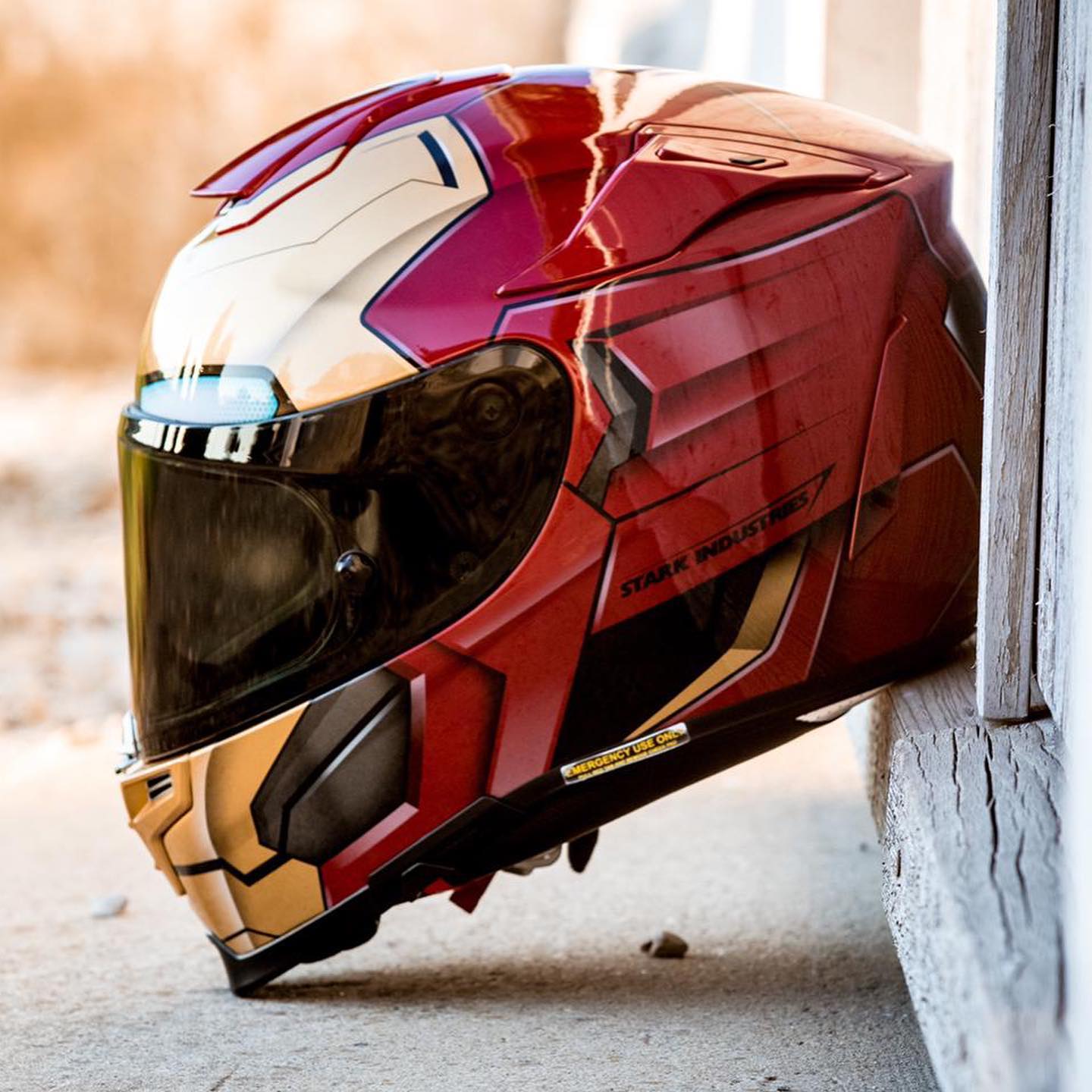
More recently, Ruroc released the ATLAS 4.0 Carbon Iron Man, an officially licensed Marvel helmet featuring a carbon fiber shell, ECE 22.06 and DOT certifications, and a premium fit and finish. This helmet is fully street legal and built for actual riding. Be cautious of unlicensed knockoffs that imitate these designs without proper safety testing.
Can I legally wear an Iron Man helmet while riding a motorcycle?
Yes, as long as the helmet is certified for road use. Look for safety labels like DOT, ECE 22.06, or Snell. If it lacks those, it’s considered a novelty helmet and is not legal (or safe) for street riding.
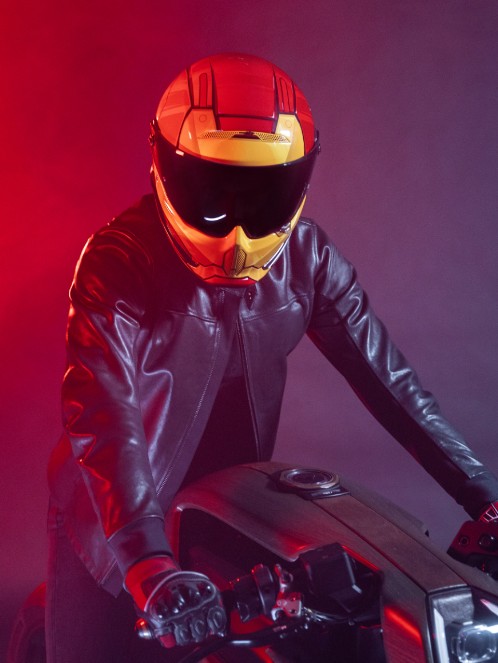
Is DOT certification enough?
DOT alone is a minimum standard in the U.S., but it’s not the most reliable. For better protection, choose a helmet that is also ECE or Snell certified. These are tested more rigorously and offer greater peace of mind.
Can I turn a regular helmet into an Iron Man helmet?
Absolutely. Start with a solid-colored, certified full-face helmet and add paint, decals, and optional details like faux panel lines or LED accents. Just be careful not to block ventilation or compromise the shell’s integrity.
What kind of helmet is best for customization?
Helmets with smooth, aerodynamic shells and minimal external ridges work best. Models like the Shoei RF-1400, HJC RPHA 12N, or LS2 Citation II Carbon are ideal bases because they offer both structural quality and clean surfaces for paint or mods.
Is it safe to paint or customize my helmet?
Yes, if done carefully. Use paints that are compatible with your helmet’s shell material, and avoid sanding or altering structural parts. Always test small sections first. For best results, use automotive-grade paint and finish with a clear protective coat.
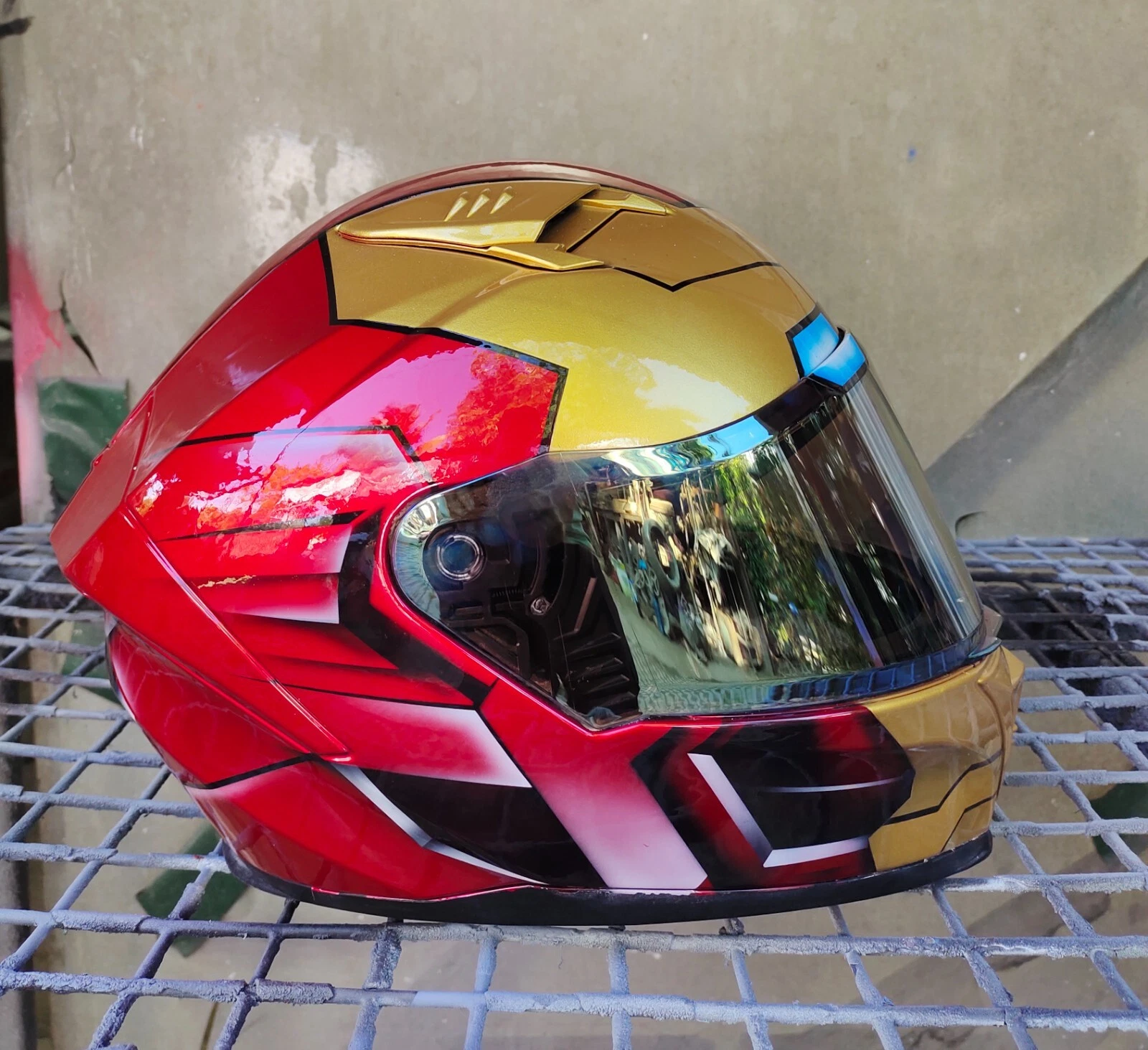
Can I add lights to make it look like Iron Man?
Yes, but keep it safe. Use low-heat LEDs and mount them externally without drilling into the shell. Never add wiring that interferes with your helmet’s liner, visor, or fit system.
Wrapping Up…
A great Iron Man helmet doesn’t stop at style. It needs to protect your head, fit like a second skin, and hold up at speed, not just in selfies. Whether you’re customizing your own or picking up a licensed version like the Ruroc ATLAS 4.0, the key is starting with the right foundation.
Now you know what to look for: legit certifications, real shell materials, and clean design lines that make customization possible without sacrificing safety. You’ve seen which helmets make the cut and how to tell if what you’re buying is actually rideable or just another prop with a paint job.
Build smart. Ride safe. And when people ask where you got that helmet, you’ll know the answer isn’t Amazon cosplay. It’s experience.
Related

Carbon Fiber Modular Helmets: Ultimate Flip-Up Lids
Discover carbon fiber modular helmets that deliver flip-up convenience, lightweight strength, and serious protection for every ride.


